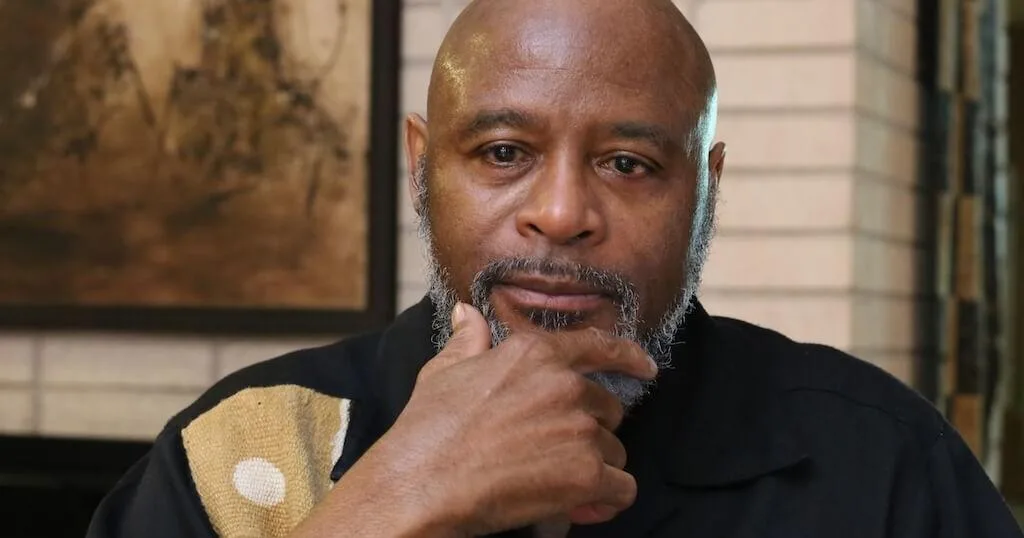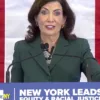
Support for reparations reflects deep racial/nationality divisions. Nonetheless its supporters have increased greatly over the last 20 years.
A 2000 poll by African American sociologist Lawrence Bobo and political scientist Michael C. Dawson found 67 percent of Black folk supported monetary reparations. Whereas only 4 percent of White people did. However, a fall 2021 PEW poll showed the percentage of White Americans backing reparations for “descendants of people enslaved in the U.S.” had more than quadrupled to 18 percent. And amongst African Americans the percentage jumped to 77 percent. There are few issues in which African Americans have greater unity.
The chasm between party affiliation is much wider than the racial/nationality gap. Democrats split nearly evenly on reparations with 48 percent in support and 49 percent opposing. Contrastingly, the Republicans are nearly unanimous in their opposition to reparations, with 91 percent opposed and only 8 percent in support.
Meanwhile the movement for reparations is getting stronger. More than 15 cities and California, New York and Illinois have established reparations commissions. Champaign does not yet have a commission, but the newly established Champaign-Urbana Reparations Coalition (CURU) has launched a serious effort for local reparations.
Yet, to date, much of the reparations movement is myopically focused on economic payments. For many, in the movement, the goal is to close the racial wealth gap. I consider this a one-sided approach that neglects the political dimension.
The aim of reparations is to repair the damage, compensate for losses and trauma, and to provide restitution, to restore to one’s prior condition before the harms were committed.
Numerous scholars and activists have documented the ravages of anti-Black racial oppression across four centuries. Economists such as Richard F. America, Julianne Malveaux, William Darity, Dania Frank, and James Stewart have calculated what is owed or the economic cost of reparations. Psychologists and psychiatrists such as H. Steven Moffitt have addressed the issue of historic and contemporary trauma.
What’s not been fully addressed are the political questions. Among the most important properties captive Africans had taken from them was their sovereignty. Like their liberty, enslavement stripped them of their human right to self-determination. The restoration of self-determination is too often left out or minimized in contemporary discussions of reparations.
I think, one reason the political question is erased from reparations discussions, is because we do not contemplate captive Africans as members, citizens of well-organized sovereign states that ruled over particular territories.
Texts routinely talk about the White settler colonialists as citizens of various European kingdoms and countries. Today, the notion of the generic African is receding in the historical literature. There is much more attention to the specificity of the African captives’ ethnic backgrounds and their specific cultures. However, rarely are captive ethnicities like the BaKongo described as nationalities, as members of/or citizens of the Kongo Kingdom, etc.
About a third of students who have taken my survey African American history course over the last 20 years enter the class referring to Africa as a country. The student’s race/nationality or ethnicity has little bearing on whether they hold this erroneous belief or not. This wrong-headed idea is more than academic, as the saying goes. It has real world consequences, particularly about how we think about reparations.
Because they think of Africa as a country it’s hard for them to conceptualize the ethnic, national, and cultural diversity of the continent that birthed humanity and human civilization. This distorted lens is even more out of focus as it pertains to the past.
In general, instead of perceiving 3,000 ethnic groups who speak over 2,000 languages spread across 54 countries, they see one people and one culture. Because students and much of the general U.S. public fail to recognize Africa’s diversity, they correspondingly do not acknowledge its ethnic and national complexities.
This narrow view explains why students and the U.S. populous cling to false notions regarding what historian Walter Rodney called the European Slave Trade. Only by ignoring or rejecting African diversity can one make the false claim that Africans “sold their own people.”
“African rulers who monopolized the barter in African slaves did not view the human merchandise as part of their people (tribe), or cultural affiliation.” That is, African aristocracies in kingdoms and empires such as Ashanti, Benin, Dahomey, and Oyo collaborated with European monarchs and merchants to raid other African societies and sell distinct ethnicities and nationalities such as the BaKongo, Igbo, Akan, Yoruba, and Mande into European chattel slavery.
For quite a few years now, I have shown Sankofa, the Haile Gerima film about African cultural retentions and physical resistance. In the last scene, those “stolen Africans” who have returned are seated on the seashore in Ghana. Gerima pans the camera from right to left. In doing so, the camera depicts Africa’s ethnicities/nationalities from east to west. Only African students recognize that Gerima is showing Africa’s population diversity. And even they do not grasp the point of Pan-African unity he is making.
By teaching the ethnic/nationality diversity of 15th-19th century Africa, we can stress the loss of sovereignty as a vital property taken from our enslaved ancestors.
For reparations to be transformative, it must address and attend to the political question, the return of self-determination.


